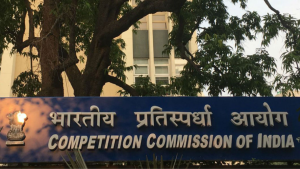

Show me the money! Unpacking Infrastructure budgeting & planning for the Subordinate Judiciary
- /
- Articles and Blogposts /
- Show me the money! Unpacking Infrastructure budgeting & planning for the Subordinate Judiciary
The Chief Justice of India’s proposal to create a National Judicial Infrastructure Commission has focused attention on the otherwise neglected subject of judicial infrastructure. The Centrally Sponsored Scheme (CSS) for Development of Infrastructure Facilities for the Judiciary has been in place from 1993-94. But in this time, the essential requirements of judicial infrastructure – availability, quality and accessibility of court halls as well as sufficient residential quarters for judicial officers – have not been effectively tackled. Successive administrative and scheme-level course corrections have taken place and brought this issue further into the public domain, centring judicial infrastructure within debates on the functioning of courts and access to justice. Previously, this had been mainly discussed in Law Commission and internal reports, but in recent years, there have been growing public attention and collaborative research aimed at unpacking long-standing constraints on judicial capacity. This article attempts to trace the funds that have been made available for judicial infrastructure over the last three decades and understand how challenges in planning and financing have prevented this scheme from building up the capacity of the justice system.
Budget allocations and actual fund release over time
In 2021, the Union Cabinet approved a continuation of the Centrally Sponsored Scheme for Judicial Infrastructure until FY 2025-26 with a total additional proposal for Rs. 9,000 crores (Rs 5,357 crores of which are to be provided at the central level and the remaining to be provided by states).1 In general, as per this scheme, the fund sharing pattern for subordinate judicial infrastructure projects is stipulated as 60:40 between central grants and the state share. In North Eastern as well as Himalayan states, the pattern is 90:10 and in Union Territories, no state share is required.2 This new policy announcement marks a massive fiscal commitment, which has not been typical of the CSS’s experience from its inception.
Beginning in the 8th Five Year Plan, the first central allocation made was a mere Rs. 180 crores in this Plan period (Figure 1). While central grants increased with succeeding Plans, this growth remained slow until the 12th Five Year Plan, which saw a five-fold increase from the previous Plan. For the first time, a dedicated Working Group had been constituted to study the previous experience of the scheme, identify shortcomings and offer suggestions to strengthen justice delivery institutions.3 This made it easier for observers to understand not only how funds were being budgeted but where they were going and which aspects of the judicial system they were strengthening.
While it is possible at the Central level to track high-level outlays, these figures provide an incomplete picture of funds actually available for judicial infrastructure given two particular constraints – (i) only a limited share of the actual funds allocated each financial year were actually released and (ii) this does not represent how much was being allocated and released by various states. From 2018 onwards, the Ministry of Justice has been implementing the Nyaya Vikas portal to centrally monitor projects in-progress and complete, track fund flows and present geo-tagged project locations similar other platforms that track MNREGA or PMAY projects. However, there is no consolidated resource that includes funds provided by states over time. This still requires close reading of individual state budgets to track not just allocation, but revised expenditure and actual accounts across years.
According to the Nyaya Vikas portal, as of November 2021, Central grants worth Rs. 8709.78 crores had been released since 1993 under this Centrally Sponsored Scheme. As Five-Year Plans ceased from 2017-18, planning for central grants shifted under annual budgeting practises of the Ministry, following the parameters of the scheme guidelines and monitoring funds utilised year on year.4 Some overarching guidance comes from transfers outlined under Finance Commissions – which devolve major shares of the states’ discretionary budget – and based on priorities expressed under the National Mission of Justice Delivery and Legal Reforms.
Moreover, actual planning – both for funds required and projects to be taken up – occurs entirely at the level of states. Committees formed under state Law Departments and High Court registrars determine which court complexes and court halls are most in need of entirely new construction, repairs or renovation and addition of facilities. They assess which courts operate in rented accommodations and estimate any shortfall in available residential quarters for judicial officers.
However, once these committees have determined the “what” that is required – nearly the entire implementation procedure is out of their hands.
Looking at central grants released up until Financial Year 2021-22 (Figure 2), we can see that the proposed continuation of Rs. 5,357 crores in central grants could potentially add 61% of the central funds that have been released over the last three decades together in just the next five years. Its worth taking a closer look at the result of releasing these funds – how they have been used, what infrastructure has been created and how do state level planning processes recognise and respond to needs in court infrastructure as felt by litigants and members of the public.
Planning for Judicial Infrastructure by States
Releasing funds at the central level cannot be effective unless states place sufficient priority on allocating their share of matching grants within their budgets – for example, Rs. 3,643 crores between 2021 and 2026.
In the past, these shares have not been adequately budgeted and released by states. Independent studies and CAG reports comment on the confusion over the stipulated fund sharing pattern under the CSS as well as states’ eligibility for central grants. But the greater issue may be that with many competing demands on discretionary funds at the state level, allocating funds to the judiciary does not get prioritised. There are few stakeholders that place open, consistent pressure on state governments to adequately fund the Judiciary. Anecdotes of vocal CJIs who have spoken publicly and to the media about the critical need to invest in judicial infrastructure are frequent, but sustained demand and negotiations at the state levels may occur behind closed doors. And without elected representatives interested in placing political pressure to create and maintain judicial infrastructure, this allocation is often not made.
Furthermore, the distribution of central grants (released) between states remains skewed – in the first eight months of FY 2021-22, grants were released to only 15 states & UTs (out of 37). While this may be partially attributed to a slowdown in civil works and construction due to the COVID-19 pandemic, these diverging trends were present in earlier years as well.
In the same vein, delays in submitting Utilisation Certificates (UCs) have prevented states from fully absorbing available funds. Out of nearly Rs. 8709.78 crores released by the Centre from the inception of the scheme, UCs worth Rs. 870.70 crores were pending as of 12.11.2021.5 Only about 40% of these pending UCs were from the same fiscal year; the rest remained from previous years. Due to delays in paperwork and transfer of funds, grants can lapse, or the next tranche of funds may not be released, causing further uncertainty for construction.
Surveys and reports repeatedly call attention to the inadequacies of existing court infrastructure maintaining that many current court halls are crumbling or unusable, are not easy to navigate for the general public (due to lack of clear signage, separate washrooms, waiting and seating rooms and systems to inform people when their cases are called) and aren’t equipped with ramps, lifts or other accessibility measures.6 It is also worth noting that judicial infrastructure is not a one-time investment but carries continuous costs for civil maintenance and upkeep as well as regular upgradation of digital facilities.
With the emphasis of the CSS on physical infrastructure, the system of planning advocated under it is flexible and decentralised, but has certain stark limitations. With the idea of the Court Development Planning System, the High Court in each state has the responsibility of preparing an annual plan, a five-year plan and a ten-year plan for subordinate courts within their jurisdiction.7 These plans were envisioned to be future-oriented, empirical and objective-focused assessments conducted by committees of High Court judges. In practice, the focus is on ensuring sufficient court halls and quarters for existing number of judges with limited perspective or predictive planning. At present, this planning is also done without clarity on available funds either in the short-term or the long-term. This is because while committees under the High Courts can prepare yearly action plans for judicial infrastructure, actual implementation is done by a constellation of government departments and executive agencies. Through the design of this CSS, there is a disharmony, between the actors that oversee creation of judicial infrastructure and those who experience day-to-day functioning of courts.
Therefore, the question of effective utilisation of funds under the CSS and construction of quality court complexes depends not just on funds available and quality of planning but effective coordination and monitoring by parties. Given proposed increased allocations in coming years, identifying necessary changes in the institutional structures and ensuring that core judicial stakeholders are substantively involved in the process will be crucial.
IMPORTANT LINKS
- https://pib.gov.in/PressReleasePage.aspx?PRID=1735375
- https://bhuvan-nyayavikas.nrsc.gov.in/documents%2FimpDocs%2F10_Revised–CSS-Guidelines-dated-19-08-2021.PDF
- http://www.wbja.nic.in/wbja_adm/files/Report%20of%20the%20working%20Group%20for%20the%20Twelfth%20Five%20Year%20Plan%20(2012-2017)%20by%20Department%20of%20Justice,%20Ministry%20of%20Law%20and%20Justice,%20Govt.%20of%20India.pdf
- https://doj.gov.in/other-programmes/centrally-sponsored-scheme-development-infrastructure-facilities-judiciary
- Oddly, UCs for Rs. 13.86 lakhs released to Lakshadweep in FY 1997-98 are still pending, almost 25 years later
- https://vidhilegalpolicy.in/wp-content/uploads/2019/08/National-report_single_Aug-1.pdf
- https://main.sci.gov.in/pdf/NCMS/Court%20Development%20Planning%20System.pdf

Smita Mutt
RECENT ARTICLES


Judicial discipline or lack thereof in NCLT and NCLAT

Year in Review: NCLT and NCLAT Under the Supreme Court’s Microscope

Testing the Waters: Pre-Implementation Evaluation of the 2024 CCI Combination Regulations

-
Rule of Law ProjectRule of Law Project
-
Access to Justice SurveyAccess to Justice Survey
-
BlogBlog
-
Contact UsContact Us
-
Statistics and ReportsStatistics and Reports
© 2021 DAKSH India. All rights reserved
Powered by Oy Media Solutions
Designed by GGWP Design